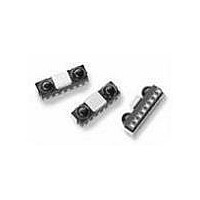HSDL-3220-021 Lite-On Electronics, HSDL-3220-021 Datasheet - Page 18

HSDL-3220-021
Manufacturer Part Number
HSDL-3220-021
Description
Infrared Transceivers IR Transceiver
Manufacturer
Lite-On Electronics
Datasheet
1.HSDL-3220-021.pdf
(18 pages)
Specifications of HSDL-3220-021
Wavelength
875 nm, 880 nm
Continual Data Transmission
4 Mbit/s
Transmission Distance
50 cm
Radiant Intensity
45 mW/sr
Half Intensity Angle Degrees
30 deg to 60 deg
Pulse Width
4 us, 1.6 us
Maximum Rise Time
60 ns, 600 ns
Maximum Fall Time
60 ns, 600 ns
Led Supply Voltage
0 V to 6.5 V
Maximum Forward Current
50 mA
Operating Voltage
2.7 V to 3.6 V
Maximum Operating Temperature
+ 70 C
Minimum Operating Temperature
- 25 C
Dimensions
8 mm x 3 mm x 2.5 mm
Data Rate
4Mbs (FIR)
Idle Current, Typ @ 25° C
1.8 mA
Link Range, Low Power
1m
Operating Temperature
-25°C ~ 70°C
Orientation
Side View
Shutdown
*
Size
8mm x 3mm x 2.5mm
Standards
IrPHY 1.4
Supply Voltage
2.7 V ~ 3.6 V
Lead Free Status / RoHS Status
Compliant
Lead Free Status / RoHS Status
Lead free / RoHS Compliant, Compliant
Shape of the Window
From an optics standpoint, the window should be flat.
This ensures that the window will not alter either the
radiation pattern of the LED, or the receive pattern of
the photodiode.
If the window must be curved for mechanical or in-
dustrial design reasons, place the same curve on the
back side of the window that has an identical radius as
the front side. While this will not completely eliminate
the lens effect of the front curved surface, it will sig-
nificantly reduce the effects. The amount of change in
the radiation pattern is dependent upon the material
Flat Window
(First Choice)
Figure 22. Shape of windows.
For company and product information, please go to our web site:
http://optodatabook.liteon.com/databook/databook.aspx
Data subject to change. Copyright © 2007 Lite-On Technology Corporation. All rights reserved.
Curved Front and Back
(Second Choice)
WWW.liteon.com or
chosen for the window, the radius of the front and back
curves, and the distance from the back surface to the
transceiver. Once these items are known, a lens design
can be made which will eliminate the effect of the front
surface curve.
The following drawings show the effects of a curved
window on the radiation pattern. In all cases, the center
thickness of the window is 1.5 mm, the window is made
of polycarbonate plastic, and the distance from the
transceiver to the back surface of the window is 3 mm.
Curved Front, Flat Back
(Do Not Use)


















